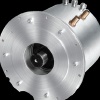Индустриален клъстер "Електромобили" - Учредители:








 |

|

|
| Актуално | За клъстера | Екип | Членове | Документи | Анализи | Услуги | Стани член | Награди | ССЕМ | Контакти |
ИКЕМ - Индустриален клъстер "Електромобили" | Петък, 14.11.2025 | |
|
Pathways to a more Sustainable Transport Infrastructure
Abstract The imperative to respond to the issues resulting from Peak Oil and Climate Change requires that New Zealand must move from its current high energy use, high resource use, high cost, petroleum dependent, transport infrastructure, to a sustainable one. Because a country's energy profile will increasingly define its economic success, New Zealand needs also to move to a lower energy society to remain competitive with other countries. What will be New Zealand’s successful transport energy of the future and how it may be best used are key considerations of our future sustainable transport system. Low energy, low material use and consequently low cost, will be the main criteria. This paper first identifies our current transport energy usage, and some of the risks of being slow to respond to change. The paper then questions the central tenants of the current New Zealand Land Transport Strategy (2008) that we move to bio-fuels and electric cars because this is not a low energy, low cost pathway. We advocate that instead of just coping with change, New Zealand uses the necessity to change as an opportunity to recast our transport infrastructure to greatly improve the economic success and liveability of our settlements to New Zealand's benefit. The second part of the paper outlines a transport infrastructure based around electricity, with a heavy emphasis on public transport use, but also with freight much more dependent on electrified rail. This second part discusses: the advantages that NZ has that will facilitate this transition, such as favourable urban forms; the energy needs and energy availability; the benefits and liveability improvements that should accrue; and the need for lead investment which can also be a tool which induces change of settlement form, thereby reinforcing the effectiveness of the new infrastructure; and some of the impediments. Introduction
The basis for much of our current transport infrastructure lies in the 1950s. This period marked a pronounced shift in our transport infrastructure, so that we became a high energy, high cost society. Aged electric tram systems in 9 cities were scrapped and their road space given over to cars. Diesel powered locomotives entered service rather than electrifying the railways. A road-only bridge across the Auckland harbour helped reinforce Auckland’s sprawling car dependant nature. A roll-on roll-off ferry service linked the North and South Islands signalled the demise of coastal shipping. Motor vehicle assembly became the mainstay of industrial growth and employment in Auckland and Wellington. Planning of that era laid out the motorway systems of the major cities and completing these systems still shape the thinking and expenditure of the recent National Infrastructure Plan. (Dravitzki &Lester 2006) Self sufficiency has declined. NZ shifted from a reliance on domestic capability for transport of our indigenous sources of hydro electricity and coal and local tram and railway workshops and is now importing both our transport energies and the vehicles of transport. Our indigenous contribution to transport is now reduced to supplying the gravels and aggregates for the roadway. |
Продукти 
Комплектна система за задвижване на електромобилиСистемата за електрозадвижване обхваща гама с три основни типоразмера на ел. мощност със съответните компоненти - електромотор и контролер. oще ...Виж всички продуктиАнкета с продължение...
|
|
|
 ЕВРОПЕЙСКИ СЪЮЗ Европейски фонд за регионално развитие Инвестираме във вашето бъдеще |
 |
 ОПЕРАТИВНА ПРОГРАМА „Развитие на конкурентоспособността на българската икономика” 2007-2013 www.opcompetitiveness.bg |
|
Интернет страницата е създадена с финансовата подкрепа на ЕФРР, в рамките на проект „Развитие на Индустриален Клъстер Електромобили” по ДБФП К-02-2/28.09.2011 г. |
|||